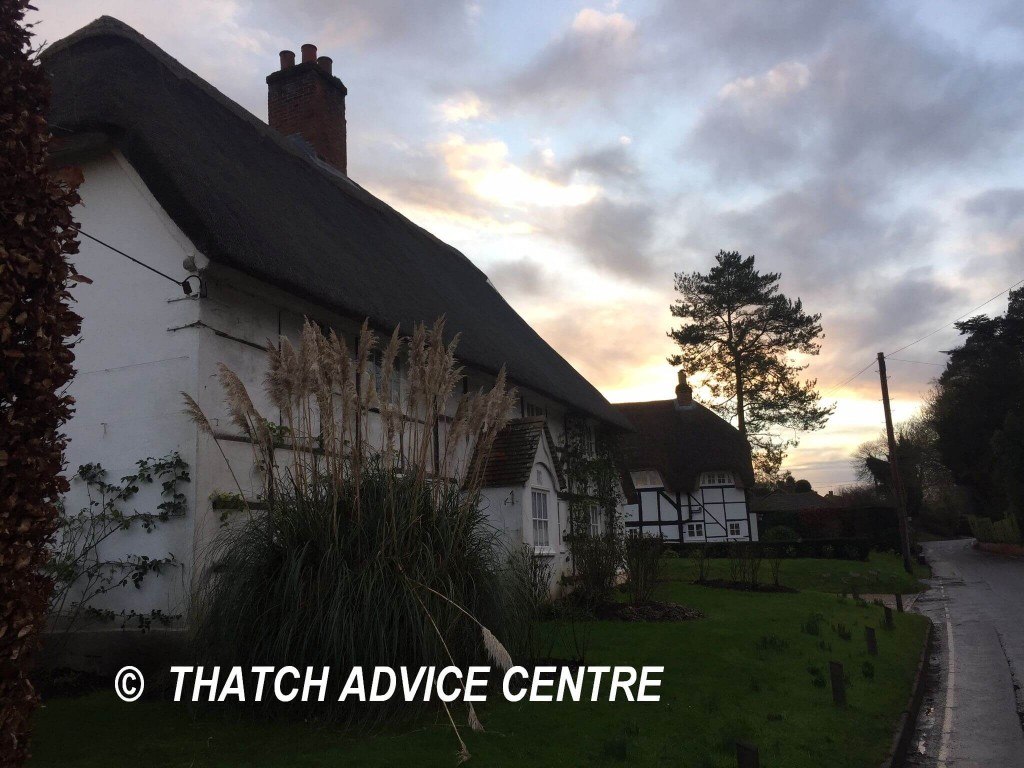In the last 3 months we know of 10 thatch fires the most recent one in Suffolk yesterday. We do not know how many of these could have been avoided but we are writing this article to remind thatched property owners about the causes and how to reduce the risks in the fight against thatch fires.
The winter months are generally known to be higher risk and six of these ten fires have been reported as the cause being chimney related or sparks from chimney.
It is so important that people understand the causes of thatch fires so that they can reduce the risks and also their insurance premiums.
Our aim has always been to give people up to date information so that they can make informed decisions on what they do with their thatched properties and fire safety is no exception. We do this for free and have no other agenda other than wanting to help reduce the number of thatch fires. Thatch is notoriously hard for our Fire Services to put out should it catch fire, so we want to promote the best Thatch Fire Safety Advice based on proper investigations and knowledge and reduce the numbers which catch fire. See our Thatch Fire Safety leaflet produced in conjunction with Buckinghamshire Fire Service.
Burgoynes Forensic investigators have assessed and reported on the causes of over 103 thatch fires. Their results are based on facts and evaluating it based on the evidence.
Further investigations and testing to better understand the causes will always be welcome but, based on the actual information so far it supports our, and many others’, views on the main risks regarding the importance of chimney integrity and avoiding a chimney fire/sparks being ejected from a chimney. The theory of heat transfer may be relevant but it appears to be in a very small proportion from the evidence we have seen. We are looking at dealing with the proven major causes.
Our advice remains:-
- Check the integrity of your chimney and flue.
- Sweep your chimney regularly, especially if you have a wood burner, including through the burning season.
- Avoid sparks being emitted from your chimney. Higher chimneys have obviously been proven to be a lesser risk if you have a wood burner as any sparks will be further from the thatch. We know this may be tricky if you have a listed building but common sense can prevail. Remember listed building consent is required for changes to chimney height. Spark arresters are not recommended.
- Burn seasoned wood. The wood should be dry to minimise tar build up in the chimney flue. Tar build up is a cause of chimney fires.
- If you have swept your chimney but not used it – quick check for debris/birds nest not a bad idea before you light a fire again.
- Think about application of fire retardant spray – eg Magma Firestop. Many insurers, who now understand the causes and risks, are now promoting its use and adjusting premiums accordingly. Application just around the chimney has been suggested but this is not recommended. The whole roof should be sprayed as distance sparks may travel is variable.
- Make sure your fires/chimney/heating appliance installations meet your insurers requirements and that you have the correct cover should the worst happen.
We are proud to keep people informed of so many interesting things to do with thatch via our website, social media and our free Newsletters (just an easy signup from the website). Thatch Fire Safety is high on our agenda. We liaise with the Fire Services, Historic England, Insurers, Forensic Investigators, thatchers and more in promoting the best, up to date advice on Fire Safety.
Contact us if you have any queries. We are happy to help as we love thatch and want to preserve it for future generations.


